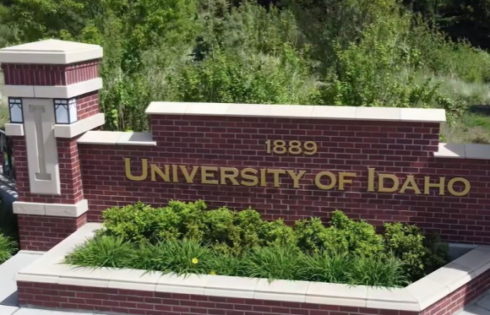If Don’t Ask, Don’t Tell is repealed by the Senate this week, the process for reinstating ROTC programs at a handful of elite schools like Stanford and Harvard could begin before the new year. But the process involves more than a vote by the faculty senate — there needs to be enough interest for the military to come back.
Currently, Stanford Army ROTC participants travel to Santa Clara University to take classes and participate in training exercises.
The Stanford contingent makes up a small part of the Santa Clara ROTC program of 94 cadets. Professor of Military Science Lt. Col. Tao leads the program, and has four other program officers helping him teach the assortment of 13 classes that make up the basic and advanced course requirements.
The Army stresses the traditional majors that the cadets receive from their respective schools. Specifically, the Army wants more majors in science, technology, engineering, and math.
“Predominantly right now, our cadets are in criminal justice,” Tao said. “That’s a very popular major for some reason in the ROTC program, and it’s not because we’re asking. When you look at the overall cadet population, quite a few of them, about 60 percent have criminal justice as their major.”
Stanford students can take these basic requirements — cadets must take a total of 35 academic units — at Stanford now, but for the advanced courses and additional training they must travel to Santa Clara University.
While students from San Jose State can in fact minor in military science, students at Santa Clara University can only receive elective credit for their ROTC courses, while Stanford students receive no credit. Nevertheless, five Stanford students have made the commitment to travel to Santa Clara University for class twice a week.
In Boston, the ROTC program spearheaded by Lt. Colonel Hall places significant emphasis on student involvement.
The consortium that Harvard is a part of is based in MIT, and faces the same conditions that the one in Santa Clara does. MIT provides one administrative assistant and the physical space that the program needs to operate. Everything else is provided by the Army, which includes all the instructors and equipment required for the program.
Cost then becomes a factor in this process.
At Santa Clara, Lt. Col. Tao pointed to the $1.5 million paid in salaries and the roughly $2-3 million cost in equipment the army has to face simply as a start-up cost. After the initial investment, the Army still must pay a maintenance and replacement cost of around $500,000 per year.
The Army ROTC cadre at MIT has, however, made efforts to support schools where only one cadet exists.
Lt. Col. Hall said he is willing to send instructors on drives that average more than 45 minutes as it saves students more than 70 study hours a year. The only consideration about including an affiliate in the ROTC network is whether there is an interested student.
The lack of credit equivalency hits Harvard students the same way it hits Stanford students – classes taken at MIT for the ROTC program cannot transfer over to the Faculty of Arts and Sciences. The situation is different at MIT because students there have a requirement for eight hours of physical education, providing a convenient way to complete requirements while attending classes. Conversely, approximately 94 percent of colleges nationwide accept credit earned in the ROTC program, according to Lt. Col. Hall.
What might happen at Stanford if the Faculty Senate votes for ROTC’s return? At this point, the hypothetical depends largely on the Army itself.
With budget cuts, engagement in two foreign conflicts, and a decent assortment of programs already in the Bay Area, the Pentagon’s interest in moving to Stanford might be more of a factor than Stanford’s own desire to see a full ROTC program back on campus.
Purely by numbers, the interest needed by Stanford students to warrant a full program would have to translate into approximate enrollments of 20 to 25 students per class, according to Lt. Col. Tao. Because such numbers are unlikely to be achieved immediately, a full ROTC program would not likely return to campus too quickly as it wouldn’t be feasible for the military.
Referencing the current single-digit participation numbers at Stanford, Lt. Col. Tao pointed to the limitations of the program.
“If I send a cadre to teach there, they’re really teaching two guys, two students, or three students, that’s not really smart,” Lt. Col. Tao said. “When the class is already here, is it easier for them to come here just to have the class.”
Stanford senior and Army cadet Ann Thompson sees the necessary recruitment levels as attainable.
“I know that many Stanford students are interested not only in bringing ROTC back to campus, but also in participating in the program.,” she said. “I have spoken to many Stanford students over the past four years who were genuinely interested in joining ROTC.”
But Tao also pointed out that “the Army right now is not planning on expanding.” Naturally, any new program or program expansion would rely heavily on the Pentagon’s willingness to budget for the program.
On October 7, Lt. Col. Tao shared his thoughts with the Faculty Senate committee currently reviewing ROTC. He suggested Stanford “could start up something small…where we can have recruiting on campus, so that we have a small footprint there.” He suggested that during “freshmen day or orientation, or some type of high-school senior orientation,” Army ROTC could have a “presence” so people can at least ask questions.
He has also considered sending a cadre to Stanford to meet with prospective cadets.
“I’d like to see if we can recruit more students from Stanford,” Tao said.
“If ROTC were to return to Stanford, it would probably happen incrementally,” Thompson said. “It would take several years and a reallocation of resources to build programs like the ones at Santa Clara, Berkeley, and San Jose State.
Before a full program can be established at Stanford, the university must also confront the issue of academic credit and faculty. Participant recruitment would likely suffer if students don’t receive credit for their 35 units of military leadership classes. Stanford would also have to decide whether or not it would grant faculty status to the Army ROTC instructors, who must be chosen and cleared by the military itself. At MIT, the only member of the cadre part of the faculty is Lt. Col. Hall. The rest of the staff is recognized as ‘Technical Instructors’.
“Both Stanford and the [Department of Defense] must first be on board,” Thompson said. “Over time, though, I believe Stanford will be able to support battalions and a detachment of its own. The payoff will be enormous.”
Kyle Huwa and Harsh Govil are staff writers for the Stanford Review. They are contributors to the Student Free Press Association.




Please join the conversation about our stories on Facebook, Twitter, Instagram, Reddit, MeWe, Rumble, Gab, Minds and Gettr.